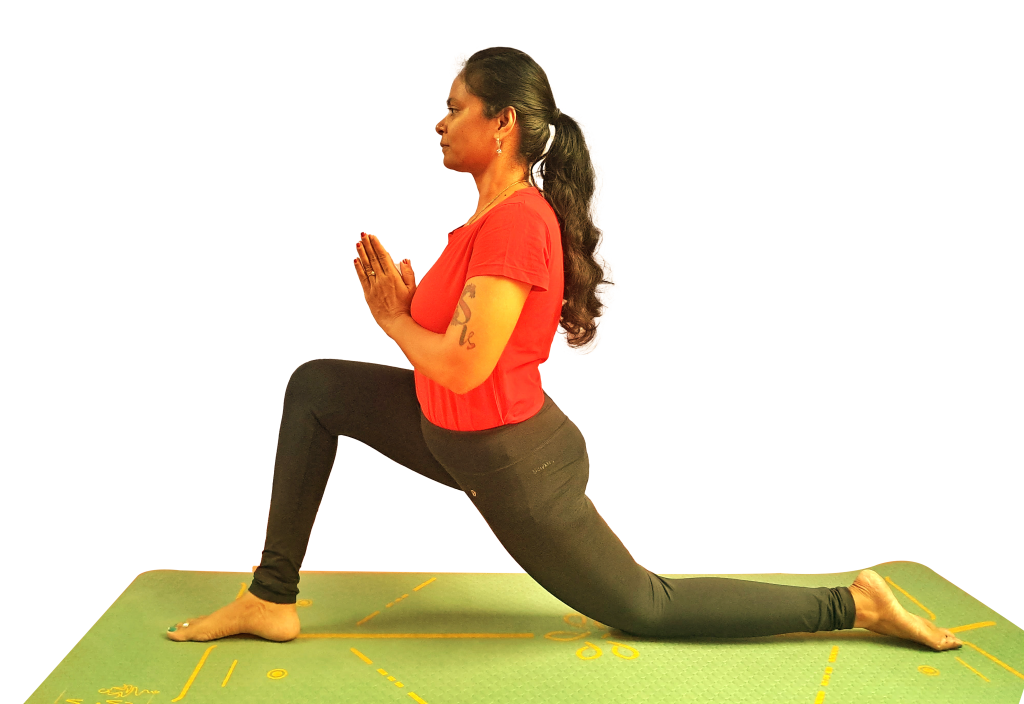by Shri N. Elumalai, PhD Scholar (Yoga Science)
at Meenakshi Academy of Higher Education & Research, Chennai
Anjaneyasana is named after Anjani, the mother of the Hindu god, Hanuman. It helps to improve balance, stability and focus. This is a variation of Anjaneyasana (Crescent Low Lunge Pose) and it works as a preparatory pose, starting with learning to balance the body on foot and knee. This can also be practiced for building endurance while staying static in the posture. This variation brings the optimal opening of the hips and the quadriceps, while also using the psoas muscles to go deeper into the posture. It is considered a warm-up yoga pose to prepare the body for more intense yoga poses/flows. Traditionally, this pose opens the Muladhara (root), Anahata (heart) and Manipura (solar plexus) Chakras.
STEPS
First, start by coming into the Adho Mukha Svanasana.
Once you are in the pose, exhale and place your right foot in front, just beside your right hand.
Make sure that your right knee and ankle are in one line straight.
You can gently lower the left knee, placing it on the floor, right behind your hips.
Now, inhale and you can lift your torso straight.
Bring your hands in front of your chest and make them Anjali Mudra.
Look forward and lengthen through your neck. Tone the bottom of your pelvis.
Then exhale. Let your hips settle down and forward, such that you feel a good stretch in the frontal region of your leg and the hip flexors.
Pull your tailbone towards the ground. Extend your lower back as you engage your spine.
Stretch the hands, pushing your heart up with a mild backbend.
Straighten your left leg on the floor from the knee to toes.
Finally, hold the pose for a few seconds or a minute.
To release the pose, bring your hands and feet back and move into the Adho Mukha Svanasana.
Repeat the pose with your left leg forward and then relax.
BENEFITS
- This asana stretches the hips on the back leg.
- Opens the hip flexors and strengthens the hip extensors.
- It helps to stretch the psoas muscles.
- This asana also opens the shoulders and chest.
- It strengthens the quadriceps, gluteus maximus, and hamstrings.
- It builds strength for the muscles that support the knee.
- It stretches the front ankle and strengthens calf muscles.
- This also stretches the calf muscles on the front leg.
- Engages the deep core muscles, which help create stability.
- It helps to alleviate pain caused by sciatica.
- This asana helps to improve balance.
- Build strength in the hands, shoulders and back.
- Balancing this asana helps strengthen the deep core.
LIMITATIONS
People with injuries to the lower back, quadriceps, groin, knees or hips, spine, HBP or problems in heart, avoid this.
Who have had a recent hip replacement surgery, neck injury or are prone to headaches, don’t lift chin or look up in the pose,
Practitioners who have injuries to foot, toe, or Achilles tendon, do with some comfortable modifications.
